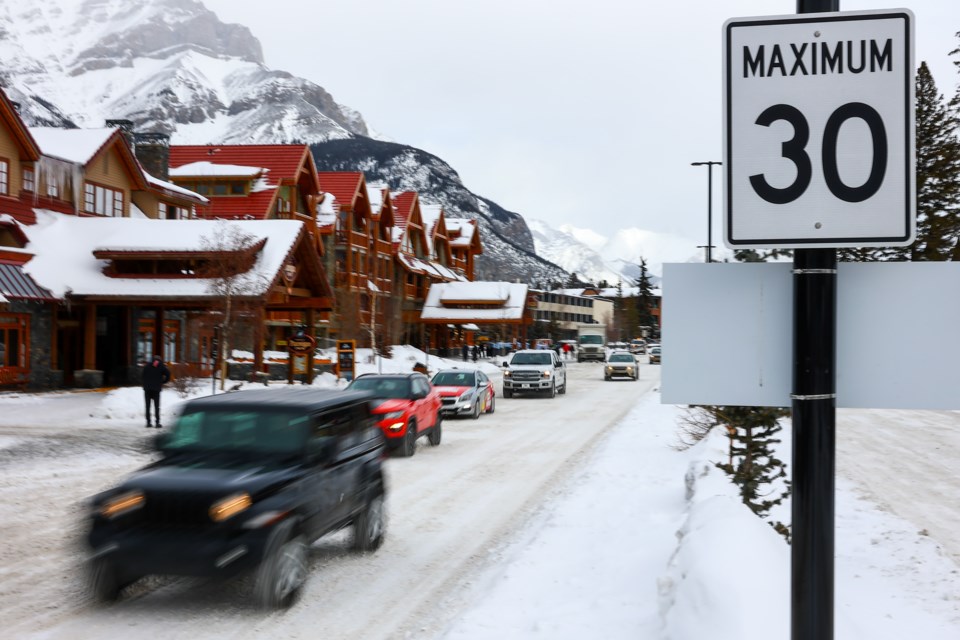Thirty is the new 40 in Banff.
Or at least it will be in coming weeks for vehicles after Banff council approved a town-wide 30km/h speed limit at its Jan. 10 meeting.
The decision has been polarizing in the mountain community – as the council agenda was swarmed with letters by those for and against – but its introduction will improve safety and give people an extra reason to use other modes of transit such as walking, cycling or skateboarding.
The Town has committed to reducing greenhouse gases and promoting a more active lifestyle and the Monday decision is another step in that direction.
Statistics from the Town of Banff had 17 per cent of residents already using cycling as their mode of transit and 45 per cent walking. The popular tourist town also regularly has 30,000 pedestrians in peak season each day.
The decision is far from original as many municipalities across Canada and the world have lowered speed limits.
Nearby Cochrane and Airdrie have 30km/h limits in residential zones, while Toronto and Vancouver each have the same 30km/h limit on residential and collector roads.
A quick Google search can find the growing number of communities following suit in recent years.
Research has consistently shown lower speeds lead to a reduction in fatalities and severe injuries.
The World Health Organization has previously stated a pedestrian hit by a car going 30km/h has a 90 per cent chance of survival. At 45km/h, it declines to a 50 per cent chance and is less than 10 per cent if a car is travelling at 80km/h.
A 2018 research paper in the Canadian Journal of Civil Engineering found reducing speed limits from 50km/h to 30km/h in school zones in Edmonton reduced fatal and severe injuries by 45 per cent. In citing other research papers, the study found it had been consistently shown that each one-kilometre reduction in speed lowers fatal and significant injuries in collisions by four per cent.
A Quebec study in the Journal of Transport and Health released earlier this year also had serious or fatal collisions on Quebec roads between 2006-13 drop from four to one per cent if speed limits were reduced by 20km/h.
According to statistics from Transport Canada, there were 1,762 fatalities, 8,917 serious injuries from vehicle collisions and 104,169 personal injuries in 2019 – the most up-to-date information. There were 338 fatalities involving pedestrians.
Of course, those statistics have gradually declined since 2002 when fatalities in vehicle collisions were at a high in the past 20 years with 2,921, while there were 15,894 serious injuries and 153,832 personal injuries. Of those fatalities, 368 were pedestrians.
But for a lower speed limit to succeed, education and enforcement are vital in maintaining success.
As more people turn to active transit such as cycling, rollerblading and skateboarding, it is important to hold all people to the same form of consequence and rules.
For every person complaining of a motorist not paying attention or getting starstruck by the mountains, there is likely a driver taking issue with a cyclist swerving in lanes or a pedestrian suddenly walking out on a street without paying attention.
Anyone travelling the Bow Valley knows how active its communities are. Many people cycle year-round – despite the heat, smoke, cold or anything else Mother Nature can throw at people – and it is no secret bikes can be seen going above the 30km/h limit.
If motorists are being held to one standard, all people should.
While asking all people to obey all laws is a pipedream, greater education should be spread to help residents and visitors.
It is one thing to highlight the safety component and another to convince people it is true.
Though those lessons take time with nothing happening overnight, the move will be positive for Banff in years to come.




